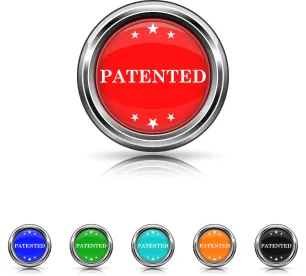Recently, the Federal Circuit affirmed a finding of non-obviousness from the Patent Trial and Appeal Board (PTAB) of a design patent owned by GM. While non-precedential, this decision is nonetheless a valuable read because the Federal Circuit scrutinized the obviousness standard applicable to design patents. In doing so, the appellate panel clarified that the obviousness formula set forth in the long-standing Durling and Rosen tests was not overruled implicitly by KSR International Co. v. Teleflex Inc.
LKQ, a company that generally sells repair parts for the majority of well-known vehicles, including parts for GM vehicles, challenged GM’s U.S. Patent No. D797,625 (the ʼ625 patent) at the PTAB. The PTAB ultimately upheld the patentability of the ʼ625 patent. In doing so, the PTAB determined that the front fender design claimed in the ʼ625 patent and the alleged primary reference that LKQ used in its obviousness challenge were not “basically the same.” More specifically, the PTAB found that, from the perspective of the ordinary observer, there were a number of differences between the claimed design and the primary reference. Applying the obviousness formula for design patents set forth by the Federal Circuit decades ago in Durling, the PTAB stopped its analysis there and confirmed the patentability of the ʼ625 patent. Briefly, Durling requires a two-step legal framework (applying the primary reference test set forth in In re Rosen) for evaluating obviousness of design patents:
Step 1 – Identify a primary (or Rosen) reference that is “basically the same as the claimed design[,]”
Step 2 – Decide whether an ordinary observer would have found it obvious to fill in the missing elements from so-called “secondary references.”
In other words, if no primary (or Rosen) reference exists, the analysis ends. On the other hand, if a primary reference is found to exist, the obviousness analysis proceeds to Step 2 where the secondary references are reviewed to see if any or all fill the gaps left by the primary reference.
On appeal, LKQ first challenged the PTAB’s ordinary observer definition and ultimate finding of no anticipation based thereon. In this aspect, the PTAB determined that the ordinary observer included only retail consumers who purchase replacement fenders and commercial replacement part buyers (rather than the broader category of retail purchasers of the entire vehicle). The Federal Circuit did not find any error in the PTAB’s definition of the ordinary observer and explained that purchasers of the product embodying the fender design are interested in the part itself, not the vehicle as a whole. The panel then went on to affirm the PTAB’s holding that the design claimed in the ʼ625 patent was not anticipated by the prior art.
In addition, LKQ invited the Federal Circuit to reconsider the current obviousness formula for design patents that was relied on by the PTAB to reach its decision. In this vein, LKQ argued that the obviousness formula was inconsistent with KSR and the Supreme Court’s rejection of “a rigid rule that limits the obviousness inquiry.” More specifically, LKQ argued that the requirement to identify a primary (or Rosen) reference is exactly the type of approach that was rejected by the Supreme Court in KSR. In fact, LKQ took the position that, since most primary references would not qualify as “basically the same as the claimed design,” the formula under Durling requiring a Rosen reference is essentially a one-step analysis that is incompatible with KSR’s directive for flexibility when determining obviousness under 35 U.S.C. § 103. The Federal Circuit was not persuaded by LKQ’s arguments and held that Rosen and Durling remain good law. In this aspect, the majority opinion stated that the Federal Circuit was bound to continue to apply Rosen and Durling just as it had in the decades preceding “without a clear directive from the Supreme Court.” In an additional opinion crafted by Judge Alan Lourie, he rationalized that, because KSR did not involve design patents (which require a different obviousness analysis than utility patents) and KSR overruled a rigid obviousness standard that was different from the “flexible” Durling and Rosen tests, KSR did not overrule the current obviousness standard for design patents.
In applying the existing (and still-good) law, the Federal Circuit ultimately held that the PTAB’s obviousness determination was supported by substantial evidence. In sum, despite LKQ’s efforts, nothing has changed in the obviousness standard applicable to design patents.




 />i
/>i
